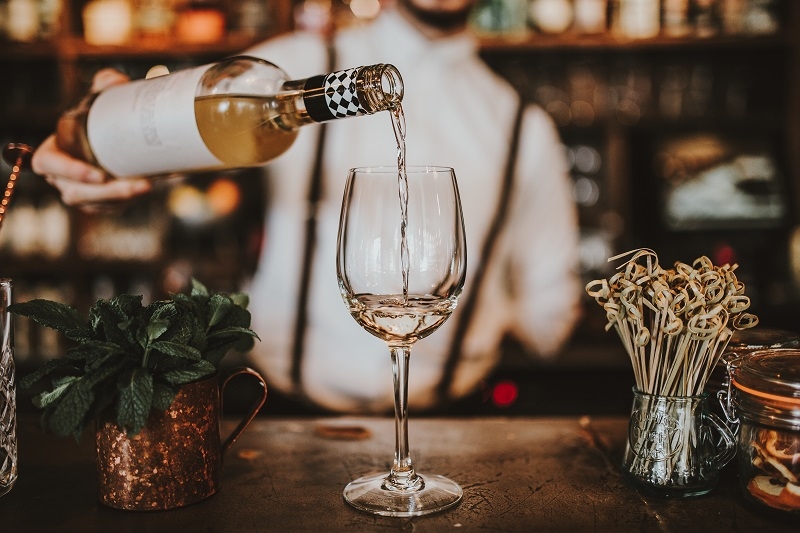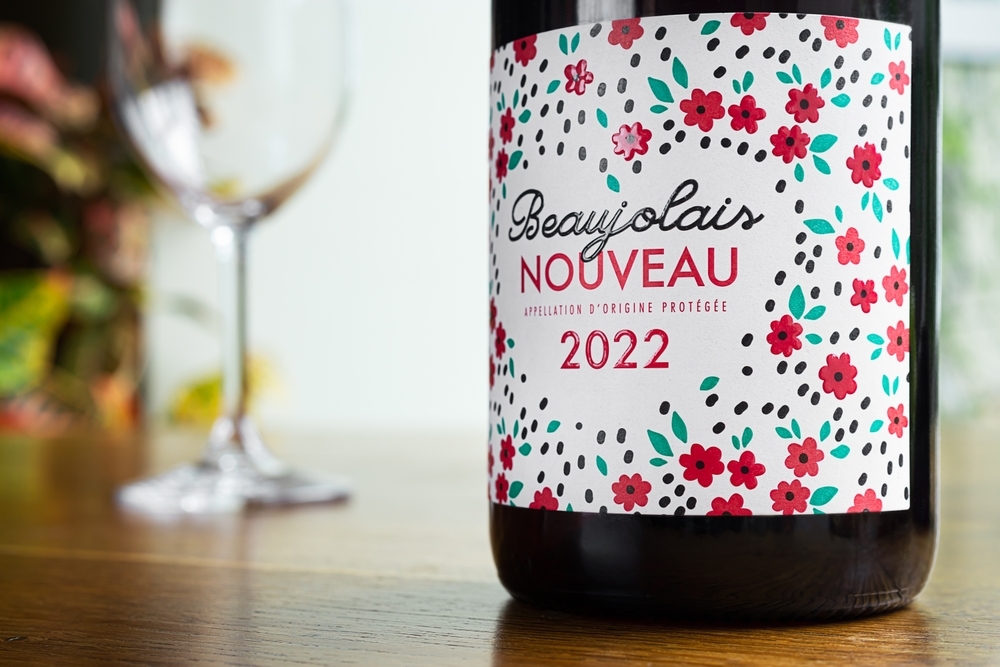Learning About The Sauternes Wine: Bordeaux's Sweet Treasure

A remarkable transformation occurs in the sun-drenched vineyards of Bordeaux's Sauternes region. Grapes, once lush and plump, undergo a magical metamorphosis, yielding a nectar cherished by wine lovers worldwide - Sauternes. Beyond its golden hue lies a story steeped in history, tradition, and the whims of nature. It's time to unravel the mysteries of this exquisite elixir.
The Origin Of Sauternes Wine
To understand Sauternes is to appreciate the unique interplay between terroir and climate. Situated along the meandering Garonne River, the Sauternais region benefits from a microclimate conducive to developing botrytis cinerea, or "noble rot."
Legend has it that the discovery of Sauternes was accidental, born out of necessity rather than intention. In the late 17th century, the vineyards of Chteau d'Yquem, now synonymous with Sauternes excellence, faced a dilemma. Left unpicked due to the ravages of war, the grapes remained on the vine well into autumn, only to be discovered transformed by noble rot. Thus, Sauternes was born by sheer luck, forever altering the landscape of Bordeaux winemaking.
Different Types of Sauternes Wine
Premier Cru Superieur
At the summit of Sauternes hierarchy lies Premier Cru Suprieur, a designation reserved for the most exceptional wines of the region. Represented by illustrious estates such as Chteau d'Yquem, Premier Cru Suprieur wines are revered for their unparalleled quality, complexity, and age-worthiness.
Premier Cru
Just below Premier Cru Superieur, Premier Cru wines represent a tier of excellence in their own right. These wines, produced by esteemed estates such as Chteau Suduiraut and Chteau Rieussec, exhibit the hallmark characteristics of Sauternes - luscious sweetness, vibrant acidity, and a kaleidoscope of flavors.
Deuxieme Cru
Completing the hierarchy of Sauternes classifications are the Deuxieme Cru wines, a tier that embodies the essence of the region's winemaking heritage. While perhaps less renowned than their Premier Cru counterparts, Deuxieme Cru wines showcase the same dedication to quality and craftsmanship. Chateau de Rayne-Vigneau and Chateau Guiraud are some of the types.
Learn More: The Art of Wine Storage: How To Preserve Flavor and Quality
Grape Varieties Commonly Used
Semillon
Semillon reigns supreme in the vineyards of Sauternes, its thin-skinned berries particularly susceptible to the transformative effects of noble rot. This noble grape thrives in the gravelly soils of Bordeaux, where it achieves optimal ripeness and develops a luscious, honeyed character.
Sauvignon Blanc
While Semillon may take center stage, Sauvignon Blanc plays a crucial supporting role in Sauternes blends. Known for its vibrant acidity and aromatic intensity, Sauvignon Blanc adds a refreshing counterpoint to the richness of Semillon. Grown in the more relaxed pockets of the Sauternes region, Sauvignon Blanc contributes zesty citrus flavors, herbal notes, and a lively acidity that helps balance the wine's sweetness.
Muscadelle
Completing the trio of noble grape varieties is Muscadelle, a lesser-known but equally important component in Sauternes production. Muscadelle brings a delicate floral aroma and a subtle spiciness to the blend, adding complexity and nuance to the finished wine. Muscadelle is often used in smaller proportions than Semillon and Sauvignon Blanc.
Production Process
The journey from vineyard to bottle is a labor of love, requiring patience, precision, and an unwavering commitment to quality. As autumn unfolds, vineyard workers embark on selective harvests, handpicking only the noblest of grapes. It is a meticulous process, requiring deft hands and keen eyes to discern the shriveled, botrytis-infected berries from their plumper counterparts.
Once harvested, the grapes undergo gentle pressing, extracting the precious juice that will become Sauternes. Fermentation follows at controlled temperatures, often arrested before completion to preserve the wine's natural sweetness. The maturation process unfolds in oak barrels, where the wine evolves, acquiring layers of complexity and character with each passing year.
Serving Sauternes Wine

To truly appreciate the nuances of Sauternes, proper serving is paramount. The wine is best enjoyed chilled but not overly cold, around 45-50F (7-10C), allowing its aromas and flavors to shine. When pouring, opt for smaller quantities, around 2-3 ounces per serving, as Sauternes' richness and sweetness lend themselves to leisurely sipping and contemplation.
Choose a smaller-sized wine glass with a narrow bowl, allowing the wine's aromas to concentrate and guide its journey to the palate. The tulip-shaped glass commonly used for dessert wines is well-suited, enhancing the sensory experience and accentuating the wine's elegance.
Check This Out: Wine Pairing with Chocolate: A Match Made in Heaven
Cooking with Sauternes Wine
While Sauternes is undeniably delightful, its culinary potential knows no bounds. In the kitchen, it lends its luscious sweetness and depth to an array of dishes, elevating everything from savory sauces to decadent desserts. For the adventurous foodie, consider incorporating Sauternes into recipes for foie gras terrine, lobster bisque, or poached pears with vanilla bean ice cream.
Sauternes Wine and Health
Moderation is key when indulging in the pleasures of Sauternes, as with any wine. While it boasts antioxidant properties that may confer certain health benefits, its high sugar content necessitates caution, particularly for those managing blood sugar levels or dental health. Enjoyed in moderation, Sauternes can be a delightful addition to a balanced lifestyle.
Food Pairings With Sauternes Wine
Foie Gras
Few pairings are as iconic as Sauternes and foie gras, a match made in culinary heaven. The rich, buttery texture of foie gras harmonizes beautifully with the wine's honeyed sweetness, while its complex aromas enhance its delicate flavor.
Blue Cheese
Blue cheese's bold flavors and creamy texture provide the perfect foil to Sauternes' sweetness. Varieties such as Roquefort, Gorgonzola, or Stilton offer a delightful contrast, their tangy, salty notes complementing the wine's richness.
Spicy Asian Cuisine
The vibrant flavors and aromatic spices of Asian cuisine find a surprising yet delightful partner in Sauternes. Dishes such as Thai green curry, Szechuan stir-fry, or Indian vindaloo are elevated by the wine's sweetness, which helps to temper the heat and accentuate the depth of flavor.
Seafood
From delicate shellfish to rich, oily fish, Sauternes complements a wide range of seafood dishes with finesse. Scallops seared to perfection, lobster bisque infused with saffron, or grilled salmon with a honey glaze all match the wine's nuanced flavors. The wine's acidity cuts through the richness of the seafood, while its sweetness enhances the natural sweetness of the dish.
Fruit-Based Desserts
Sauternes reigns supreme, its honeyed sweetness adding depth and complexity to fruit-based confections. Whether paired with a classic peach cobbler, poached pears with vanilla bean ice cream, or a tangy lemon tart, Sauternes elevates each dish to new heights.
Also Read: Sweet and Dessert Wines: Explore Everything In Sweetness
Conclusion
Sauternes Wine is the harmonious fusion of nature's bounty and human ingenuity. Sauternes embodies the essence of Bordeaux's winemaking tradition. Whether enjoyed on a special occasion or savored as a moment of everyday indulgence, Sauternes invites us to immerse ourselves in the timeless allure of Bordeaux's sweetest treasure. Cheers to the golden elixir that is Sauternes!
FAQs
What is the best way to serve a Sauternes wine?
Serve chilled in a smaller-sized wine glass at around 45-50F (7-10C), and pour small quantities per serving.
Is Sauternes a dessert wine?
Sauternes is commonly enjoyed as a dessert wine due to its luscious sweetness and complex flavors.
What kind of wine is Sauternes?
Sauternes is a sweet white wine produced in the Sauternes region of Bordeaux, France.
Why is Sauternes so expensive?
The labor-intensive production process, limited yields, and the risk associated with noble rot contribute to the relatively high cost of Sauternes wines.
Is Sauternes wine sweet?
Yes, Sauternes wine is known for its pronounced sweetness, balanced by acidity and complexity.
What cheese goes with Sauternes?
Blue cheeses such as Roquefort or Gorgonzola are classic pairings with Sauternes, creating a delightful contrast of flavors.
What does Sauternes wine taste like?
Sauternes wine typically exhibits honey, apricot, peach, and citrus flavors with underlying notes of botrytis-induced complexity.
This content was created by AI
No keywords available
-1717753922-r.jpg)


